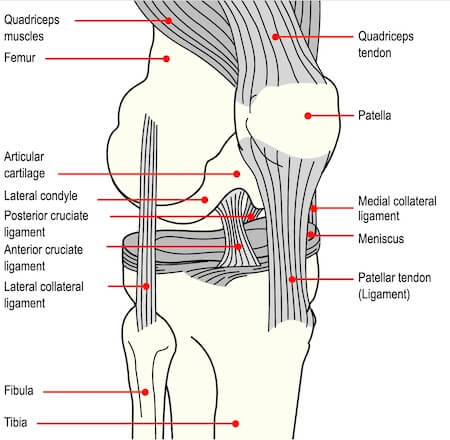
Muscles are our strength but we can only use them fully when we also focus on our Connective Tissue
About 35 years ago, my life largely revolved around playing Basketball (with a little study and work in there somewhere!). At that time, if anyone tore their ACL (Anterior Cruciate Ligament, connecting the knee joint) it was a career-ending injury, the end.
Around 20 years ago, I was playing squash one evening with a top female player when her ACL “went”. She collapsed to the floor suddenly. We could tell what had happened, and, stoic as she was, it was a devastating blow at a young age. That said, she soon was fitted with the latest in leg braces and, due to the gracefulness of her particular style of movement, was back playing soon. A few years later, that same player was able to get a new operation and, ultimately, fully recover function and use of her knee and playing back at 100% of the level of strength and flexibility as before.
Medicine, science, sports have learned so, so much about ligament and other connective tissue in recent decades, leading to great advances in not only areas such as reconstructive surgery (as with ACL injuries), but also a proactive focus on the connective tissue that can release tension and generate increased flexibility and access to your full muscle strength.
As a young athlete thirty plus years ago, we only focussed on our muscles. You warmed up your muscles, then you used them to move around. Increasingly, though, we have come to understand the importance of connective tissue, of ligaments, tendons, and also other types of connective tissue, including fascia, which can be described as a thin casing that surrounds and holds every organ, blood vessel, bone, nerve fibre and muscle in place. The tissue does more than provide internal structure; fascia has nerves that make it almost as sensitive as skin. When stressed, it tightens up. Again, when I was in my peak athletic years, some 25-35 years ago, I had never heard of fascia, yet in more recent years, I have learned so much on this, starting with the amazing Kate Dunne of Flow in Cayman, through Bodywork (fascial release), stretching classes and more, and more recently through working with Ryan Jansen of Feldenkrais London.
My focus on connective tissue (keeping it moving, releasing it, increasing flexibility etc) means that my muscles can do more, be stronger, react faster.
Be Connective
This story came back to me recently in talking to a client, a global corporate leader focussed on how their business can thrive even more as they continue their rapid global expansion.
Words like alignment, teamwork, collaboration, communication are ones we have often talked about as areas of source focus that can drive outcomes of better results. However, in our most recent conversation, they used the word “connective”.
It immediately struck me as powerful and “at source” to ultimately generate better results, even more so than words such as “collaboration”. To “be connective” is to be someone who has and models the behaviours of being connective.
Using the metaphor of the body in sports, our people, skills, knowledge, experience are the “muscles”, yet all too often corporations and their leadership and management focus, like we used to in the world of sports and medicine, on the “muscles”. Those muscles, though, are not ever going to be used to their fullest potential unless we also focus on the “connective tissue”.
When you have tens of thousands of staff (as in this case) in a professional services firm spread around the world and with widely varied areas of work, industry focus, business models and working practice models, it is even more critical to “be connective” in order to learn from each other, to share best practice, to take learnings from one area to another, whether rationally or by serendipitous connection and conversation. The more we do that, the more we get to use our “muscles” to the fullest extent, optimising performance and generating the highest levels of results.
So how do we “Be Connective” in our business? There are many, many ways, many unique to each organisation. The starting point, though, is to be clear on what you mean (for your business) around what “Be Connective” means. After that, invest in activities, communication, behaviours that demonstrate this, as well as rewarding people (with incentives and other recognition) for when they do so. It may feel new, it may feel challenging, but often being connective is something to do to “release the fascia”, to break down tension, barriers, silos. At times there may be no linear focus on commercial outcomes, simply to “be connective”, but the more we connect, we build relationships and understanding, the more we can then find spaces and opportunities through that “connective tissue” focus to better use our “muscles”.
